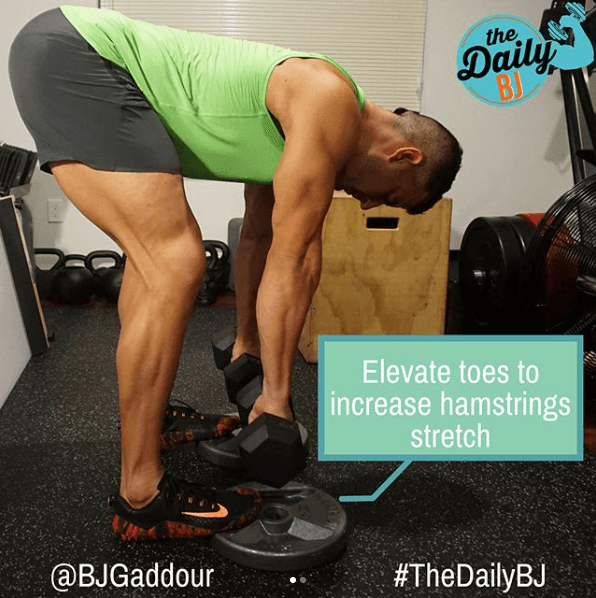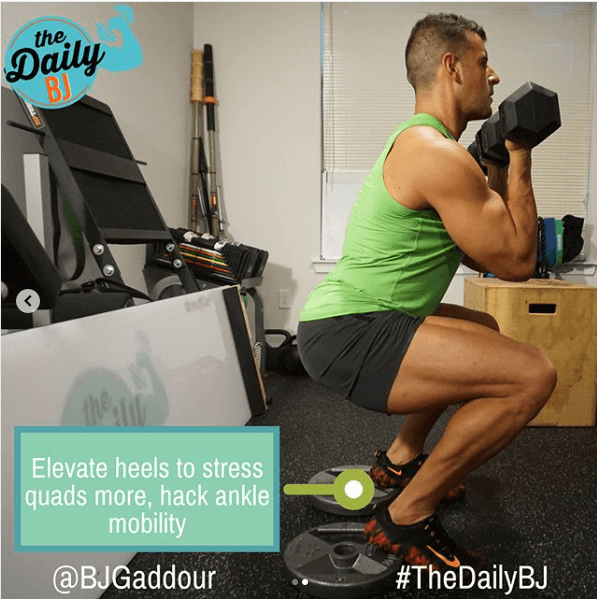Most of the time, your goal is to help your clients improve their performance on basic exercises—squats, hip hinges, presses, pulls. You change it up here and there, of course, but always within the context of that primary goal.
But sometimes you need to go off-script. Maybe the client is starting to tune you out, or maybe she’s frustrated with her slow progress. That’s where these tweaks come in. What they all have in common:
- They make basic exercises a little harder
- They allow clients to feel their muscles working in new, more targeted ways
- With multiple sets taken to fatigue, there’s a good chance for a bit of post-exercise soreness, which clients will see as a sign of progress
As with any new exercise, you’ll want to try them in your own workouts before unleashing them on your clients.
Upper-Torso Exercises
Cable Fly with Loaded Stretch
This pec-building move, from bodybuilder and online trainer Scott Tousignant, is good for clients most interested in hypertrophy. As he explains, you need to fatigue the muscles with at least 10 full-range-of-motion reps, then hold in a stretched position for about 30 seconds.
The technique also works well with seated and chest-supported rows.
Half-Kneeling Bent-Over Straight-Arm Pulldown
It’s an appropriately long name for an exercise that offers complex benefits. John Rusin, DPT, uses it to activate the deep stabilizing muscles in the posterior movement chain, along with the connective tissues that link the lats to the pelvis. Strengthening those links will lead to stronger and safer deadlifts.
The half-kneeling position, Rusin says, gives your client a more stable base, allowing her to maintain a hip hinge without making mechanical compensations that would shift the lower back out of the neutral position. Put another way, it cuts down on the number of moving parts.
Final tip: If you don’t have a long rope, as shown in the video, Rusin recommends using two standard ropes. Slide each ring to the end, and attach both to the same cable mechanism. You’ll get a better range of motion, which in this case means more muscle activation.
Bottoms-Up Plate Press
You’ve probably used the bottoms-up kettlebell shoulder press with your more experienced clients. If you have, there’s a good chance you encountered a few issues:
- The client lacks the grip strength to hold a challenging weight in the bottoms-up position
- Your gym doesn’t have heavy enough kettlebells for your strongest clients
- Your gym’s kettlebells go up in increments that leave your client in between two weights—too strong for 8 kg, but not strong enough to handle 12 kg, for example
That’s where the bottoms-up plate press comes in handy. The grips on urethane-coated plates are thicker and easier to hold upright. A client who struggles with a 10-kg kettlebell might be able to handle a 25-pound weight plate, even though it’s three pounds heavier. For your strongest clients (or for you in your own workouts), a 35-pound plate might be manageable when you’d struggle to hold a 16-kg kettlebell upright, even though they weigh the same.
Unless you train professional athletes, you probably won’t have any clients who can do the exercise with a pair of 45-pound plates, as Joel Seedman, PhD, does in the video. More likely, you’d do the half-kneeling version of the bottoms-up press, using one arm and a single plate.
Arm Exercises
Dumbbell Offset Curl
The biceps curl is the simplest and most intuitive exercise in the strength-training playbook. Few trainers will ever encounter a client who’s never tried it before, or who struggles with form.
But that doesn’t mean it has to remain simple. As Nick Tumminello explains in the video, by using an offset grip, you emphasize supination, a function of the biceps that even experienced clients probably haven’t given much thought.
We don’t know how big an effect it’ll have on your clients’ upper-arm girth, but it’ll sure feel like those muscles are working harder.
Decline Triceps Extension
Just as you’ll rarely have a client who’s lived a curl-free life, you won’t meet many who aren’t concerned about their triceps. Whether it’s an older woman who wants to reduce her arm flab or a middle-aged man who’s more interested in loading his guns than reducing his 45-inch waist, everyone wants to do some form of elbow extension.
This variation is a favorite of Dan Trink, co-owner of Fortitude Strength Club in New York, who likes the exercise because it puts the long head of the triceps in a pre-stretched position. It’ll feel different to your clients, and probably give them a bit of post-workout soreness and inflammation—which, if nothing else, will make the muscles feel bigger than they were before the workout.
Lower-Body Exercises
Trainers instinctively want clients to do exercises the way we do them. We want their feet flat on the ground when they do squats and deadlifts, even if their ankle mobility limits their range of motion on the former and tight hamstrings make the latter problematic.
Of course there’s nothing wrong with wanting your clients to be able to do these basic movement patterns competently. That’s what trainers do. But there’s a downside to insisting on textbook form for clients with non-textbook biomechanics: They may feel the exercise more in their lower back than in the targeted muscles.
Exercise savant BJ Gaddour, former fitness director of Men’s Health magazine, offers a way to save the back and engage the quads and hamstrings: Elevate your heels on squats and your toes on stiff-legged deadlifts and other hip-hinge exercises.


Core Training
RKC Plank
The plank is to 21st-century programming what the push-up was to 20th-century gym classes. Everyone does it. Problem is, some people have been doing it so long that it’s stopped being much of a challenge to their core muscles. It’s just one more rote thing they do at the end of the workout.
ALSO READ: Planks: The Magic Sauce to Fix Hip Tightness and Increase Mobility
Supine Stir the Pot
Stir the pot is a core exercise popularized by Stuart McGill, PhD, the legendary spine biomechanist and occasional contributor to the PTDC.
ALSO READ: What this Biomechanics Professor Wishes People Knew About the Real Causes of Low Back Pain
You see it a lot in gyms, and have probably used it with some of your clients. What you don’t see very often are people doing the exercise competently—with their forearms resting on a Swiss ball, toes on the floor, and their lower back in a stable, neutral position.
A relatively strong person will flex over the ball like a wrestler trying to submit his opponent. A relatively weak person will resemble an elderly woman in the grocery store, resting her arms on the cart and pushing it with her chest. Both versions negate the spine-stabilizing benefit of the exercise.
That’s why we like this supine version from Kelvin King Jr. You stabilize your back on the floor while the band offers a resistance challenge to your core muscles.
How to Integrate These Moves
We like these exercises because they’re interesting and different. Try working one or more of them in with clients who’ve lost some of their enthusiasm. They should be especially useful for clients who’re focused on hypertrophy, or who simply like to feel a bit of post-workout soreness in their favorite muscle groups.
If nothing else, they may help you get a client’s attention on those days when you need to throw a curveball. Or, if your clients enjoy them and like the results, they could join your list of go-to exercises. You won’t know until you try them out.










